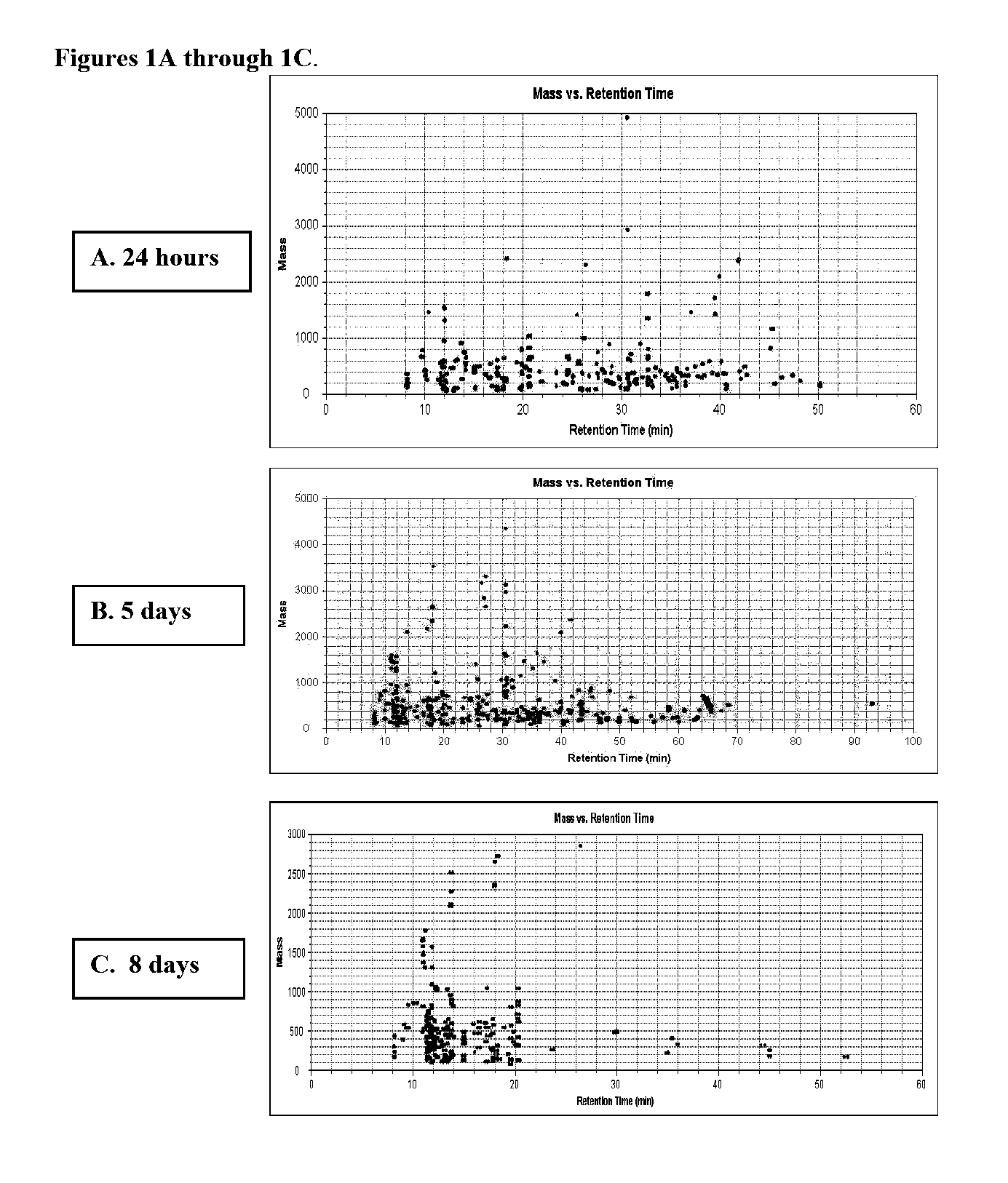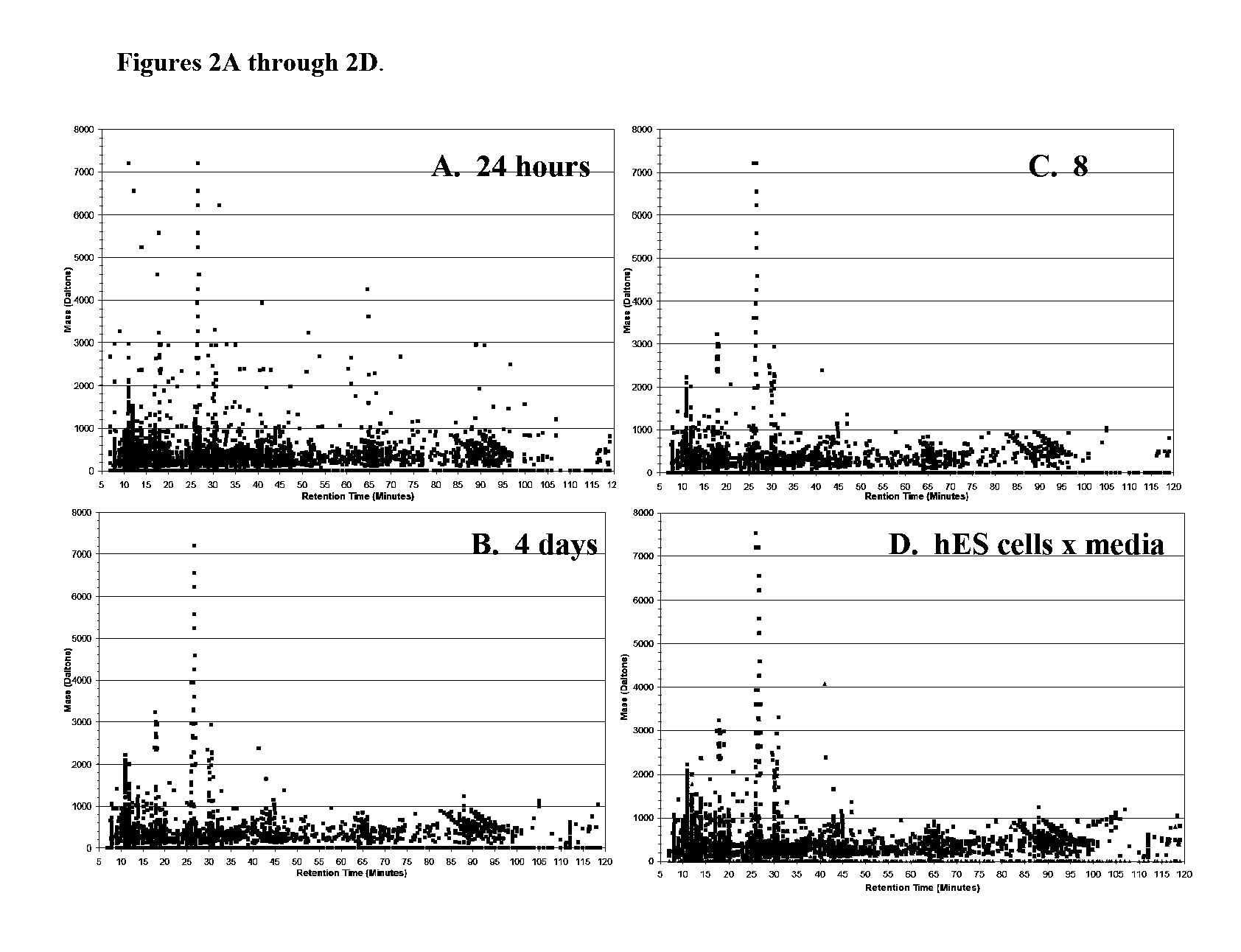Reagents and Methods for Using Human Embryonic Stem Cells to Evaluate Toxicity of Pharmaceutical Compounds and Other Chemicals
a human embryonic stem cell and toxicity technology, applied in the field of toxicological screening of pharmaceuticals and other chemical compounds, can solve the problems of difficult evaluation, cognitive disorders, and robust and efficient models
- Summary
- Abstract
- Description
- Claims
- Application Information
AI Technical Summary
Benefits of technology
Problems solved by technology
Method used
Image
Examples
example 1
Developmental Toxicology Screening
[0055] To demonstrate the efficacy of hESCs as a model system for developmental toxicity testing, hESCs were treated with a known teratogen, valproate (VPA). Valproate is a common mood stabilizer and anti-convulsant drug with clinical indications in epilepsy and bipolar disorder (Williams et al., 2001, Dev Med Child Neuro 43:202-6) that has been associated with developmental abnormalities (Meador et al., 2006, Neurology 67: 407-412). The mechanism by which valproate produces developmental defects, however, is not fully understood, despite the increased susceptibility of the nervous system (Bjerkedal et al., 1982, Lance 2:109: Wyszynski et al., 2005, Neurology 64:961-5; Rasalam et al., 2005, Dev Med Child Neuro 47:551-555). Exposure to valproate results in a pronounced increase in spina bifida and neural tube defects (NTDs; Bjerkedal et al., 1982, Lancet 2:109) at ten-to-twenty times that of the general population, as well as cognitive disorders suc...
example 2
[0068] The efficacy of the analysis shown in Example 1 was confirmed by gene expression studies, wherein changes in gene expression were observed following VPA treatment of hESCs. VPA treatment was not detrimental to hESCs, which remained viable for multiple passages following teratogen exposure, thus enabling gene expression analysis to be performed.
[0069] Treated and control H1 / NIH code WA01 hES cells (passage 41) were analyzed by real-time PCR, and each treatment group was paired with a corresponding control group that received the standard growth media combination of CM+bFGF without VPA. In these studies, total cellular RNA was extracted from cells harvested at 24 hours (24H), 4 days (4D) and 8 days (EC) using the RNA Easy Kit (Qiagen, Valencia, Calif.) according to the manufacturer's instructions.
[0070] Expression levels of candidate test genes and a housekeeping gene (Beta-2-microglobulin) were evaluated by quantitative real-time PCR using a DNA Engi...
example 3
Human Embryonic Stem Cell Metabolome: Metabolite Profiles Following Teratogen Exposure
[0075] Exposure of hES cells to the teratogen valproate induced significant changes in different metabolic pathways, including pathways important during pregnancy and development. An alternative metabolic pathway activated during pregnancy are shown in FIG. 5, wherein tryptophan is converted to kynurenine. To investigate this aspect of the invention, hESCs were cultured as described in Example 1, and the procedure for valproate treatment was performed as described therein. Treatment 1 (24 hours) exposed hES cells to 22 μM valproate for 24 hours followed by collection of supernatant and cell pellets. In the second treatment group (4 days), hES cells were exposed to 22 μM valproate for 4 days and harvested on day 4. In the third treatment or extended culture (EC, 8 days), hES cells received valproate for 4 days followed by culture in standard hES cell media for an additional four days. Cells and sup...
PUM
| Property | Measurement | Unit |
|---|---|---|
| molecular weight | aaaaa | aaaaa |
| molecular weight | aaaaa | aaaaa |
| electrospray ionization time of | aaaaa | aaaaa |
Abstract
Description
Claims
Application Information
 Login to View More
Login to View More - R&D
- Intellectual Property
- Life Sciences
- Materials
- Tech Scout
- Unparalleled Data Quality
- Higher Quality Content
- 60% Fewer Hallucinations
Browse by: Latest US Patents, China's latest patents, Technical Efficacy Thesaurus, Application Domain, Technology Topic, Popular Technical Reports.
© 2025 PatSnap. All rights reserved.Legal|Privacy policy|Modern Slavery Act Transparency Statement|Sitemap|About US| Contact US: help@patsnap.com



